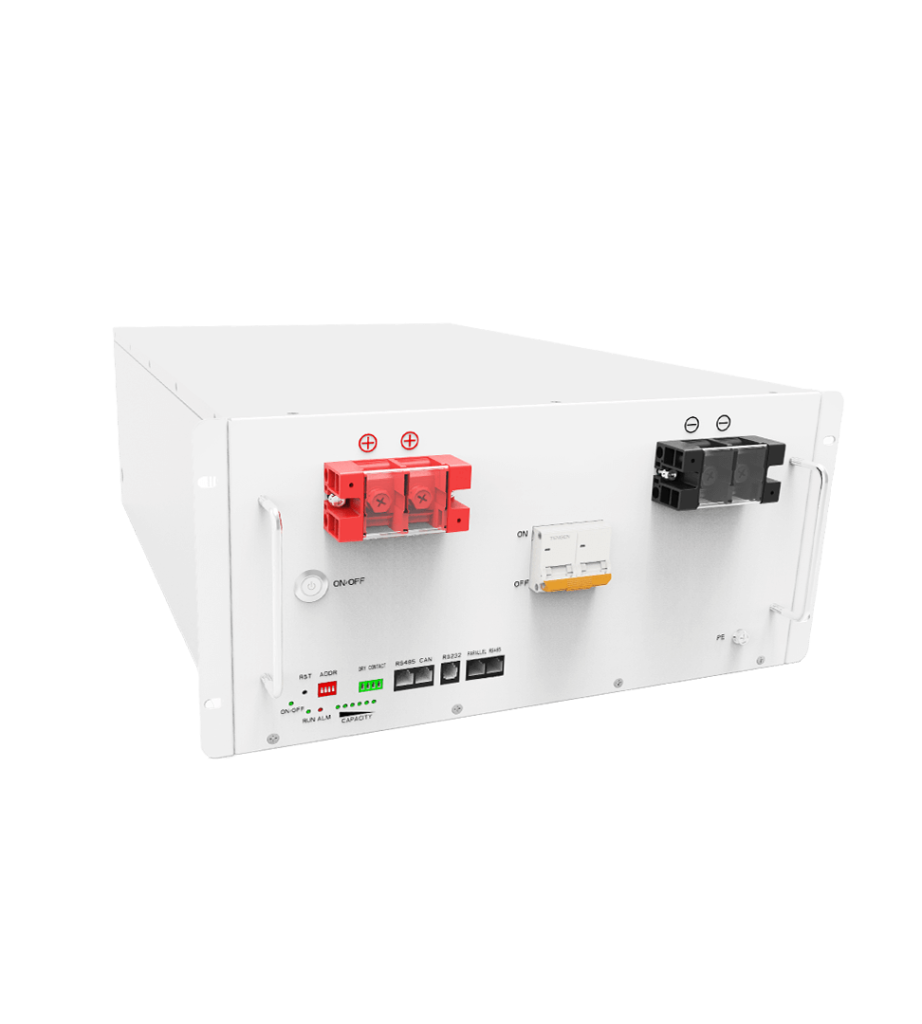
Grazie alla piattaforma di monitoraggio intelligente, gli inverter della serie completa EC supportano lo spegnimento immediato da remoto in caso di incidente. L'impostazione dei parametri e l'aggiornamento del FW da remoto facilitano l'O&M dell'impianto fotovoltaico.

" Cellule di grado A da EVE, REPT, CATL
" Pacex BMS - Marchio nazionale affidabile
" Carica 1C / scarica 0,5C - Completa in meno di 2 ore
" 5000+ cicli o 5 anni di garanzia
| Parametri BM160S048XN | |
|---|---|
| MODELLO | BM160S048XN |
| Batteria | |
| Materiale della cella | Batteria al litio-ferro |
| Capacità nominale della cella | 314Ah |
| Tensione della batteria | 51.2V |
| Capacità della batteria | 16076Wh |
| Funzionamento Intervallo di tensione | 44.8 - 57.6V |
| Corrente di scarica continua massima | 200A |
| Corrente di carica standard | 157A |
| Corrente di carica continua massima | 200A |
| Durata del ciclo standard della batteria | ≥6000 cicli@80%SOH |
| Caratteristiche di protezione | Protezione da sovraccarico, protezione da sovrascarica, protezione da sovracorrente, protezione da cortocircuito, protezione da sovratemperature |
| Parametri generali | |
| Display | Spia LED / LED (opzionale) |
| Dimensione W*D*H (mm) | 483*786*223 |
| Peso (NW Kg) | Circa 120 kg |
| Metodo di installazione del telaio | Tipo di scatola con inserto per montaggio a rack, 5U |
| Terminale | M10 |
| Raffreddamento | Convezione naturale |
| Grado di protezione | IP20 |
| Comunicazione | CAN/RS485 (opzionale) |
| Ambiente operativo | |
| Temperatura di stoccaggio | -40℃ - 60℃ |
| Temperatura di carica | -10℃ - 50℃ |
| Temperatura di scarico | -20℃ - 50℃ |
| Umidità | 0% - 95% Non condensazione |
| Ambiente operativo | Interno |
| Certificazioni | |
| Certificazioni | UN38.3, RoHS, CE, MSDS |
5.000 cicli o 5 anni, a seconda di quale numero viene raggiunto per primo.
Migliori marche di celle per batterie, come EVE, CATL, un migliore BMS e un migliore ambiente di utilizzo miglioreranno notevolmente la durata complessiva della batteria.
In generale, le batterie al litio-ferro-fosfato sono uno dei tipi più sicuri tra le tecnologie di batterie comuni, soprattutto rispetto alle batterie ternarie al litio, che hanno prestazioni migliori in termini di stabilità. Tuttavia, questo non significa che siano assolutamente sicure. La loro sicurezza deve essere valutata in modo oggettivo ed è strettamente legata al sistema di gestione della batteria, al processo di produzione e alle condizioni di utilizzo.
In base alla capacità di stoccaggio consigliata, compresa tra 40% e 60%, e considerando che il tasso di scarica della batteria è di circa 2% al mese, si raccomanda di controllare e ricaricare la batteria ogni 3-6 mesi.
Seguiteci e consultate gli argomenti tecnici per maggiori dettagli.
I metodi di stoccaggio, in particolare lo stato di carica e la temperatura ambiente durante la conservazione, possono avere un impatto significativo sulla durata della batteria. L'immagazzinamento inadeguato è una delle cause principali del degrado accelerato delle batterie.
Seguiteci e consultate gli argomenti tecnici per maggiori dettagli.
Conservare le batterie a bassa carica per un lungo periodo di tempo, di solito inferiore a 20%, è molto dannoso per la salute della batteria e può addirittura essere più dannoso che conservarle a piena carica per un lungo periodo di tempo.
Il SOC di una batteria al litio ferro fosfato si riferisce alla percentuale di energia residua attuale della batteria rispetto alla sua capacità nominale e viene utilizzato per quantificare lo stato di disponibilità della batteria.
DOD è l'abbreviazione di Depth of Discharge (profondità di scarica), che si riferisce al rapporto tra la scarica della batteria e la sua capacità nominale, solitamente espressa in percentuale.
La capacità delle batterie convenzionali, in particolare di quelle al litio ferro fosfato, si calcola come segue: Capacità nominale (Ah) = tensione nominale (Volt) * corrente nominale (A)
Offriamo un servizio di assistenza tecnica e sostituzione localizzato in Nigeria, Iraq e Filippine e presto offriremo altri paesi.